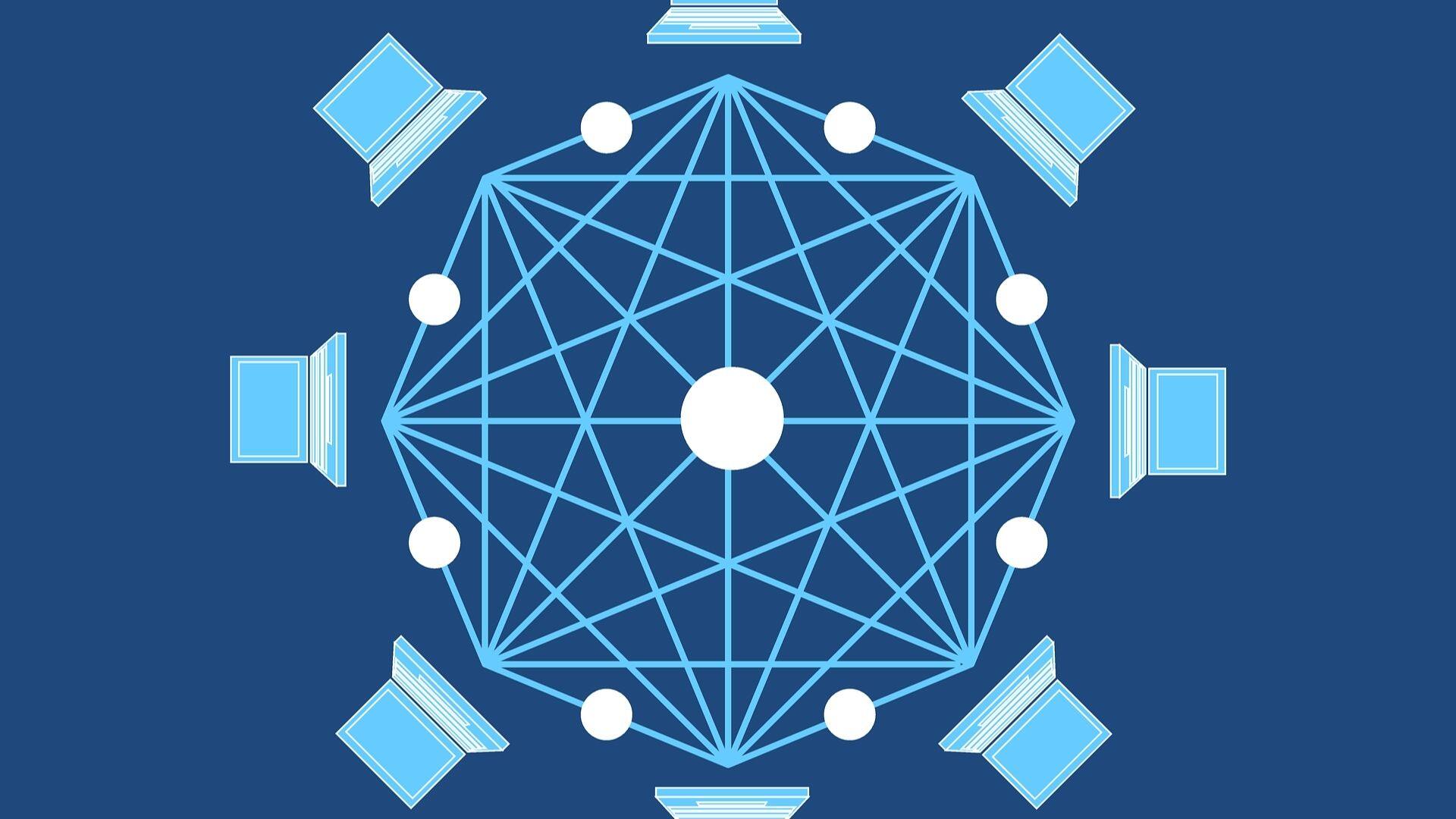Introduction
Blockchain technology has revolutionized various industries by providing transparency, security, and decentralization. However, one of the major challenges that blockchain faces is scalability. The ability of a blockchain network to handle a large number of transactions in a timely and efficient manner is crucial for its widespread adoption.
Enter Skale, a revolutionary platform that aims to tackle the scalability challenge in blockchain. Skale focuses on enhancing the performance and scalability of blockchain networks, particularly the Ethereum network. By introducing innovative solutions, Skale is paving the way for a more scalable and efficient blockchain ecosystem.
In this article, we will explore how Skale is addressing the scalability issues in blockchain, its relationship with the Ethereum network, the use cases for Skale’s technology, and the role that Skale plays in shaping the future of blockchain.
As the demand for blockchain applications grows, scalability becomes a critical factor for the success of these decentralized networks. Traditional blockchains struggle to handle high transaction volumes, resulting in slow confirmation times and increased transaction fees. Skale recognizes this issue and is dedicated to providing a scalable infrastructure for decentralized applications (dApps) to thrive.
By leveraging state-of-the-art technology, Skale allows blockchain networks to scale horizontally, enabling seamless processing of a significantly higher number of transactions. With Skale, decentralized applications can achieve higher throughput, lower latency, and reduced transaction costs, creating a user-friendly environment for both developers and end-users.
As we delve deeper into the world of Skale, it’s important to understand its relationship with the Ethereum network. Skale is built as a Layer 2 solution on top of Ethereum, utilizing the security and decentralization of the Ethereum network while mitigating its scalability limitations. This integration allows Skale to fully leverage the existing Ethereum ecosystem and benefit from its vast community and developer base.
Next, let’s explore the specific strategies and technologies that Skale employs to overcome the scalability challenges faced by traditional blockchains. Stay tuned to see how Skale brings innovation and efficiency to the world of blockchain.
The Scalability Challenge in Blockchain
Blockchain technology has gained immense popularity due to its ability to provide a decentralized and transparent platform for various applications. However, as the adoption of blockchain grows, it faces a fundamental challenge: scalability.
A blockchain network consists of a chain of interconnected blocks that store transactional data. Every new transaction added to the blockchain needs to be verified by a network of nodes, which can be time-consuming and resource-intensive. This process results in limitations on the number of transactions that the network can handle per second, known as the scalability problem.
Traditional blockchains, like the Bitcoin and Ethereum networks, have struggled to scale to meet the increasing demands of real-world applications. The limited throughput means longer confirmation times and higher transaction fees, hindering the usability and efficiency of blockchain-based systems.
Scalability is crucial for the mass adoption of blockchain technology. As more industries and applications leverage blockchain for their operations, they require networks capable of handling a high volume of transactions in a fast and cost-effective manner. Without scalability, blockchain technology cannot reach its full potential.
One of the primary reasons for the scalability challenge in blockchain is the consensus mechanism employed by most networks, such as proof-of-work (PoW) and proof-of-stake (PoS). These consensus mechanisms ensure the network’s security and integrity but come at the cost of reduced scalability.
Another factor contributing to scalability limitations is the storage capacity required to store the entire blockchain history. As the blockchain grows larger, the storage requirements increase, posing challenges for network participants.
To address the scalability challenge, various solutions have been proposed, including layer 2 solutions, sharding, and off-chain transactions. These approaches aim to increase the network’s capacity to process transactions without compromising security and decentralization.
Skale is at the forefront of solving the scalability challenge in blockchain. By implementing cutting-edge solutions, Skale enables blockchain networks to scale horizontally, enhancing their transaction processing capabilities.
With Skale’s technology, decentralized applications can achieve higher throughput and lower latency without sacrificing security. Skale leverages the power of sidechains and the Ethereum network to create a scalable infrastructure for the development and deployment of dApps.
In the next section, we will explore Skale’s solution for scalability and how it overcomes the challenges faced by traditional blockchains. Stay tuned to learn more about Skale’s innovative approach to revolutionizing the blockchain space.
Skale’s Solution for Scalability
Skale is a groundbreaking platform that aims to solve the scalability challenges faced by blockchain networks. Its innovative approach introduces cutting-edge solutions to enhance the performance and scalability of decentralized applications (dApps).
The core concept behind Skale’s scalability solution lies in the implementation of sidechains. Sidechains are independent blockchain networks that are connected to the main Ethereum network. Skale utilizes these sidechains to offload transactions from the main Ethereum chain, significantly increasing the network’s capacity to process transactions.
By utilizing sidechains, Skale enables parallel processing of transactions, allowing for greater throughput and reduced confirmation times. This approach effectively addresses the scalability limitations faced by traditional blockchains, providing a more efficient and user-friendly environment for dApp developers and users.
Skale implements a unique architecture comprised of three layers: the Skale Chain, the Skale Manager, and the Ethereum Mainnet. The Skale Chain is where the bulk of the computational workload is processed, while the Skale Manager manages the sidechain infrastructure. The Ethereum Mainnet ensures the security and decentralization of the Skale sidechains.
Another innovative solution that Skale incorporates is Elastic Sidechains. These sidechains dynamically adjust their size based on the demand, allowing them to scale up or down as needed. This adaptive approach maximizes resource utilization while ensuring efficient transaction processing.
Skale also introduces the concept of Virtual Machines on its sidechains. This feature enables developers to write smart contracts in different programming languages, expanding the possibilities for dApp development. It eliminates the need for developers to specifically write contracts in Solidity, the language used by Ethereum, making it more accessible for a wider range of developers.
Furthermore, Skale utilizes a decentralized network of nodes known as Validators to ensure the security and functionality of the sidechain infrastructure. Validators validate transactions, verify the state of the sidechains, and participate in consensus protocols, maintaining the integrity of the Skale network.
Overall, Skale’s solution for scalability combines the power of sidechains, elastic scaling, and virtual machines to create a highly scalable and efficient blockchain ecosystem. By providing a platform that can handle a higher volume of transactions, Skale paves the way for the widespread adoption of decentralized applications and the realization of blockchain’s full potential.
In the next section, we will explore the relationship between Skale and the Ethereum network, shedding light on how Skale leverages Ethereum to create a scalable infrastructure. Stay tuned to learn more about this synergy between two groundbreaking blockchain technologies.
The Ethereum Network and Skale
The Ethereum network, with its smart contract functionality, has revolutionized the blockchain space. It has become the platform of choice for developers and businesses seeking to build decentralized applications (dApps). Skale is designed to work in tandem with the Ethereum network, leveraging its security and decentralization while addressing its scalability limitations.
Skale acts as a Layer 2 solution on top of the Ethereum network, providing a scalable infrastructure for dApps. It does this by utilizing sidechains, which are independent blockchain networks connected to the Ethereum mainnet. Skale sidechains offer faster and more efficient transaction processing, offloading the burden from the main Ethereum chain.
By integrating with Ethereum, Skale benefits from the vast Ethereum ecosystem, which includes a thriving community of developers, businesses, and users. Developers can leverage existing Ethereum tools, libraries, and frameworks to build their dApps on the Skale network, while also taking advantage of Skale’s scalability enhancements.
Additionally, Skale ensures that the security and integrity of transactions on its sidechains are maintained by anchoring periodically to the Ethereum mainnet. This anchoring process ensures that the sidechains remain synchronized with Ethereum, allowing for secure and reliable cross-chain interactions.
Skale and Ethereum have a symbiotic relationship, with Skale providing scalability solutions that complement the Ethereum network’s strengths. As the demand for decentralized applications and blockchain solutions continues to grow, this collaboration between Skale and Ethereum is vital in driving the mass adoption of blockchain technology.
Importantly, Skale’s integration with Ethereum expands the capabilities of both networks. Ethereum gains access to Skale’s scalable infrastructure, allowing it to accommodate a higher volume of transactions and support a broader range of applications. On the other hand, Skale benefits from the existing Ethereum user base and network effects, fostering a more vibrant and innovative ecosystem.
Moreover, Skale is Ethereum-compatible, meaning that dApps built on Ethereum can seamlessly operate on the Skale network with minimal modifications. This compatibility fosters interoperability and allows for easy migration of existing dApps to Skale, ensuring a smooth transition for developers and users.
The collaboration between Skale and Ethereum represents a significant stride towards a more scalable and efficient blockchain ecosystem. It opens up new opportunities for developers, businesses, and users, enabling them to leverage the benefits of both networks and propel the adoption of blockchain technology to new heights.
In the next section, we will delve into the specific strategies and technologies that Skale employs to overcome the scalability challenges faced by traditional blockchains. Stay tuned to discover how Skale is pushing the boundaries of blockchain scalability.
How Skale Overcomes Scalability Challenges
Skale tackles the scalability challenges faced by traditional blockchains through its innovative approach, incorporating cutting-edge technologies and strategies. By implementing these solutions, Skale significantly enhances the transaction processing capabilities of blockchain networks.
One of the primary strategies employed by Skale is the utilization of sidechains. These sidechains enable parallel processing of transactions, relieving the main Ethereum chain from the burden of handling every transaction. This approach dramatically increases the network’s capacity to process transactions, resulting in higher throughput and reduced confirmation times.
Skale’s sidechains are specifically designed to be elastic, meaning they can dynamically adjust their size based on the demand. This elastic scaling allows for efficient resource utilization, as the sidechains can expand or contract as required. As a result, Skale ensures optimal performance and scalability, even during peak usage periods.
To guarantee the security and integrity of its sidechains, Skale utilizes a decentralized network of Validators. Validators validate transactions, verify the state of the sidechains, and participate in consensus protocols. This distributed approach ensures the resilience and trustworthiness of the Skale network, mitigating the risks associated with centralized entities.
Skale also leverages its own unique consensus mechanism called the Proof-of-Use (PoU). In the PoU consensus, Validators “prove” their usage of network resources by locking Skale Network Tokens (SKL) as collateral. This mechanism incentivizes Validators to behave honestly and helps maintain the stability and security of the network.
Another standout feature of Skale is its support for multiple virtual machines (VMs). Unlike traditional blockchains that typically support only one programming language, Skale allows developers to write smart contracts in different programming languages. This flexibility expands the possibilities for dApp development and lowers the barrier of entry for developers who may not be familiar with the Ethereum-specific Solidity language.
Skale’s technology also incorporates innovative storage and caching mechanisms, further optimizing the performance of the network. By utilizing advanced caching algorithms and efficient storage schemes, Skale minimizes read and write latencies, ensuring fast and efficient access to data on the sidechains.
In summary, Skale overcomes scalability challenges by utilizing sidechains and elastic scaling, implementing a decentralized network of Validators, employing the Proof-of-Use consensus mechanism, supporting multiple virtual machines, and optimizing storage and caching. These strategies and technologies collectively empower Skale to provide a highly scalable and efficient blockchain infrastructure for decentralized applications.
In the next section, we will explore the diverse range of applications and use cases for Skale’s technology. Stay tuned to discover how Skale is revolutionizing various industries with its scalable blockchain solutions.
Skale’s Use Cases
Skale’s scalable blockchain technology opens up a wide range of use cases across various industries. By providing a high-performance infrastructure, Skale enables decentralized applications (dApps) to flourish in sectors where scalability is a critical factor. Let’s explore some of the use cases where Skale’s technology can make a significant impact:
- Decentralized Finance (DeFi): DeFi has emerged as one of the most promising applications of blockchain technology. With Skale’s scalability enhancements, DeFi dApps can handle a higher volume of transactions, enabling seamless trading, lending, and borrowing without the limitations of slow confirmation times and high fees.
- Gaming and Non-Fungible Tokens (NFTs): The gaming industry is seeing a surge in blockchain-based games, powered by non-fungible tokens. Skale’s scalability solutions provide the necessary infrastructure for these games to handle large-scale multiplayer interactions, in-game asset transfers, and secure ownership verification of NFTs.
- Supply Chain Management: Supply chains benefit greatly from the transparency and immutability offered by blockchain technology. Skale’s scalable infrastructure ensures that supply chain networks can handle a high volume of transactions related to tracking goods, verifying origins, and maintaining an auditable record of each step in the supply chain.
- Healthcare: In the healthcare industry, Skale’s scalability can empower secure and efficient management of patient records, interoperability between healthcare providers, and real-time processing of medical transactions. This can streamline processes, improve data sharing, and enhance patient care.
- Identity Management: Skale’s technology can revolutionize identity management systems by providing a scalable and secure platform. With Skale, users can have control over their digital identities, ensuring privacy and reducing the risk of identity theft.
- Internet of Things (IoT): The IoT ecosystem generates a massive amount of data that needs to be securely processed and managed. Skale’s scalability enhancements enable IoT devices to seamlessly interact with blockchain networks, enabling efficient communication, data integrity, and secure transactions.
These are just a few examples of the use cases where Skale’s technology can make a significant impact. The scalability provided by Skale’s sidechains, elastic scaling, and efficient infrastructure opens up endless possibilities for dApp developers across diverse industries.
As Skale continues to evolve and innovate, we can expect to see its technology being applied across various sectors, shaping the future of decentralized applications and blockchain adoption.
In the next section, we will explore the Skale Network Token (SKL) and its role in the Skale ecosystem. Stay tuned to learn more about the token that powers Skale’s scalable blockchain solution.
Skale Network Token (SKL)
The Skale Network Token (SKL) plays a crucial role in the Skale ecosystem. It serves various purposes and incentivizes stakeholders within the network. Let’s explore the key aspects of SKL:
Utility Token: SKL is a utility token that powers the Skale network. It is used for various functions within the ecosystem, including paying for transaction fees, accessing network resources, and participating in the network’s governance.
Proof-of-Use (PoU) Consensus: SKL is also used in Skale’s unique Proof-of-Use (PoU) consensus mechanism. Validators stake their SKL tokens as collateral to prove their usage of network resources. This incentivizes Validators to behave honestly and contributes to the stability and security of the network.
Transaction Fees and Resource Allocation: SKL tokens are utilized to pay for transaction fees on the Skale network. These fees are used to incentivize Validators and ensure resource availability. By staking SKL tokens, participants can access network resources to deploy and operate their dApps.
Governance: SKL token holders have the right to participate in the governance of the Skale network. They can propose and vote on network upgrades, improvements, and parameter changes. This allows the community to have a say in the development and evolution of the Skale ecosystem.
Economic Incentives: SKL tokens provide economic incentives for participants in the Skale network. Validators earn SKL rewards for their role in validating transactions and maintaining the network’s security. This incentivizes Validators to actively participate and contribute to the network’s growth and stability.
Token Distribution: SKL tokens were distributed through various channels, including private and public sales, as well as strategic partnerships. This broad distribution ensures decentralization and widespread participation in the Skale ecosystem.
Token Economics: SKL has a capped supply, with a set number of tokens in circulation. The scarcity of SKL tokens provides a framework for value appreciation, as increased adoption and usage of the Skale network can drive demand for the token.
As Skale’s ecosystem expands and more dApps are built on the platform, the demand for SKL tokens is expected to increase, creating economic opportunities for token holders.
In summary, the Skale Network Token (SKL) serves as a utility token within the Skale ecosystem. It facilitates transactions, incentivizes network participants, allows for governance participation, and contributes to the network’s economic incentives. SKL plays a vital role in aligning the interests of stakeholders and supporting the growth of the Skale network.
In the next section, we will discuss the significant role that Skale plays in shaping the future of blockchain technology. Stay tuned to discover the impact of Skale in the ever-evolving world of decentralized applications.
The Role of Skale in the Future of Blockchain
Skale is poised to play a significant role in shaping the future of blockchain technology. Its scalable infrastructure and innovative solutions are addressing the critical challenge of scalability that has hindered the widespread adoption of blockchain networks.
As the demand for decentralized applications (dApps) continues to grow, Skale’s technology provides a scalable foundation for these applications to thrive. By leveraging sidechains, elastic scaling, and advanced consensus mechanisms, Skale enhances the transaction processing capabilities of blockchain networks, enabling them to handle a greater volume of transactions in a fast, efficient, and cost-effective manner.
Skale’s contribution extends beyond solving the scalability challenge. By integrating with the Ethereum network, Skale leverages the existing Ethereum ecosystem, benefitting from its large developer community, established tools, and vast user base. This integration enhances interoperability and promotes collaboration between the two networks, fostering further innovation and adoption of blockchain technology.
Furthermore, Skale’s commitment to decentralization and security is paramount. Through the use of a distributed network of Validators and the Proof-of-Use (PoU) consensus mechanism, Skale ensures the integrity and trustworthiness of its platform. This emphasis on security is crucial for the adoption of enterprise-grade applications and the widespread acceptance of blockchain solutions by traditional industries.
Skale’s scalability solutions have the potential to revolutionize a wide range of industries. The ability to handle high transaction volumes opens up possibilities for applications in finance, gaming, supply chain management, healthcare, and many more. Skale empowers developers and businesses to build and deploy scalable dApps that can revolutionize existing systems and processes.
With Skale’s technology, blockchain can move beyond its current limitations and achieve its full potential as a transformative technology. Skale’s scalable infrastructure and innovative solutions pave the way for a new era of decentralized applications, where scalability, efficiency, and user experience are at the forefront.
As blockchain technology continues to evolve, Skale’s role as a scalable infrastructure provider will become increasingly crucial. Its solutions enable the seamless integration of blockchain into various industries and lay the groundwork for the mass adoption of decentralized applications.
By fostering collaboration between developers, businesses, and users, Skale is driving the progress of blockchain technology and opening up new possibilities for the future. As Skale continues to innovate and expand its ecosystem, it is poised to shape the blockchain landscape and play a pivotal role in the decentralized future that lies ahead.
Conclusion
Skale is at the forefront of solving the scalability challenges in blockchain technology. Its innovative approach, incorporating sidechains, elastic scaling, and advanced consensus mechanisms, paves the way for a more scalable and efficient blockchain ecosystem.
By addressing the scalability limitations faced by traditional blockchains, Skale empowers developers, businesses, and users to unlock the full potential of decentralized applications (dApps). With Skale’s scalable infrastructure, dApps can handle high transaction volumes, ensuring faster confirmation times, lower fees, and a seamless user experience.
Skale’s integration with the Ethereum network further strengthens its position in the blockchain landscape. By leveraging Ethereum’s security, decentralization, and existing ecosystem, Skale creates a synergistic relationship that fosters collaboration and opens new opportunities for innovation.
The use cases for Skale’s technology span various industries, including decentralized finance (DeFi), gaming, supply chain management, healthcare, and more. Skale’s scalability solutions provide the necessary infrastructure for these industries to thrive, revolutionizing processes and creating new possibilities for users.
The Skale Network Token (SKL) plays a vital role in the Skale ecosystem, serving as a utility token, facilitating transactions, incentivizing network participants, and enabling governance participation. SKL aligns the interests of stakeholders, ensuring the growth and stability of the Skale network.
Looking ahead, Skale is poised to shape the future of blockchain technology. With its commitment to scalability, security, and usability, Skale is driving the adoption of decentralized applications and revolutionizing the way industries operate.
As blockchain technology continues to evolve, Skale’s scalable infrastructure and innovative solutions will play a pivotal role in unlocking the true potential of blockchain. With its focus on scalability, efficiency, and user experience, Skale is poised to make a lasting impact on the decentralized future that lies ahead.
As the demand for scalable solutions continues to grow, Skale’s contribution to the blockchain ecosystem will be instrumental in paving the way for widespread adoption and transformative applications. The future of blockchain is scalable, and Skale is leading the charge.

























